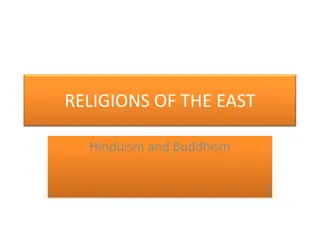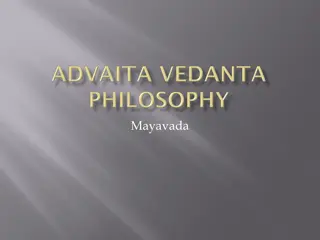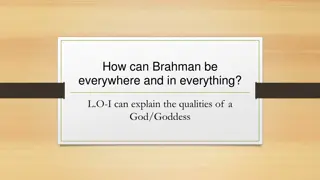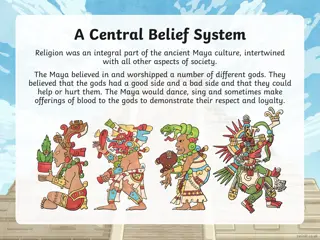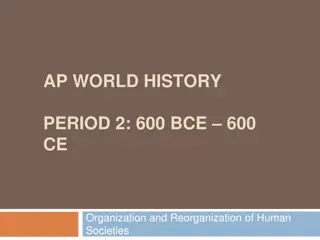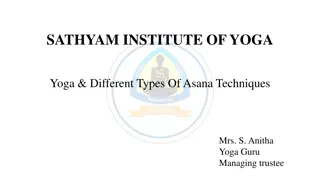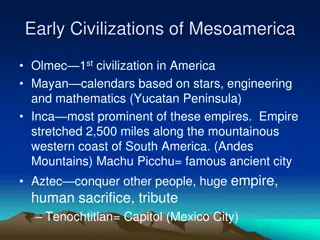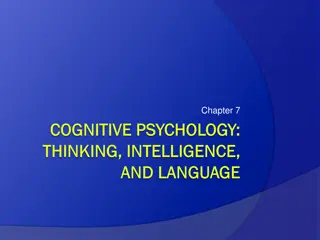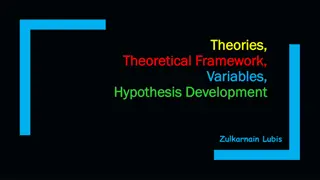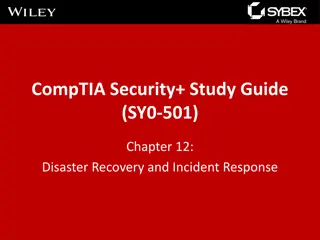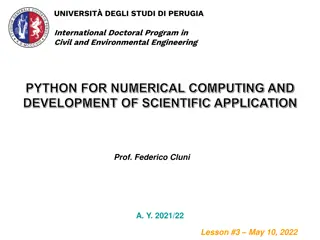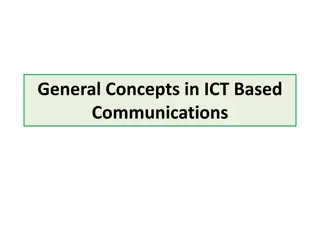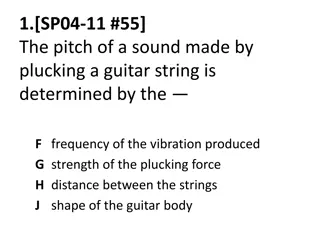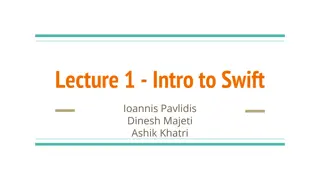Concepts in the Upanishads: Brahman, Atman, Maya, Samsara, Karma, and Moksha
The Upanishads introduce profound concepts such as Brahman as the cosmic power, Atman as the soul within, Maya as illusion, Samsara as the cycle of rebirth, Karma as the moral law of cause and effect, and Moksha as liberation. These teachings emphasize the oneness of all existence and the quest for spiritual realization beyond worldly illusions.
Download Presentation

Please find below an Image/Link to download the presentation.
The content on the website is provided AS IS for your information and personal use only. It may not be sold, licensed, or shared on other websites without obtaining consent from the author. Download presentation by click this link. If you encounter any issues during the download, it is possible that the publisher has removed the file from their server.
E N D
Presentation Transcript
Hinduism A Brief History and Description (part 2: Concepts in the Upanishads)
The Upanishads: Important Concepts Brahman originally the cosmic power in the Vedic sacrifice and chants. Upanishads: the divine reality at the heart of things. See Molloy, p. 85. (Brahman; not Brahmin which = priest or Brahma who is a deity of the Trimurti) God is everything, and everything is God. The absolute; the Supreme Reality. Cosmos is not really a creation, but an emanation. Brahman s essence lies in all created objects, including human beings (e.g., Namaste) The multiplicity of the universe with all its deities, humans, animals, etc. is actually a unity; one divine being. Everything else is fleeting and impermanent. What is real and lasting can only be discovered by turning away from worldly things.
The Upanishads: Important Concepts Atman The soul within yourself. The vital principle or deepest identity. You can find Brahman within yourself. All human beings share this atman. Atman is Brahman. (How can this be? Is the central question). See the Chandogya Upanishad 6:1:3: In the beginning was that thou art. The rishi Shankara (Advaita = not two-ness ; Vedanta school). Others disagree.
The Upanishads: Important Concepts Maya The everyday world is maya, illusion. Everything is fleeting and impermanent (see above). What is real and lasting can only be discovered by turning away from worldly things. The ultimate foundation of reality is imperishable. We can discern it (Atman/Brahman) Liberating idea for the rishis, because the material benefits from the Vedic sacrifices are not important; the spiritual realities are. Sacrifices and the Gods continued to be important, but they were subordinate to monism, every apparently different thing is merely a manifestation of the Brahman.
The Upanishads: Important Concepts Samsara Not in earlier Vedas. Doctrine of rebirth or reincarnation. World is temporary and not relevant. Have to see through this illusion in order escape the cycle of birth/death/rebirth. Reborn according to your karma (see next slide) at higher or lower level
The Upanishads: Important Concepts Karma Also not in earlier Vedas Moral law of cause/effect that determines the direction of your rebirth. Every action, thought, desire, etc. has moral consequences. Effects on society and helping others?
The Upanishads: Important Concepts Moksha Freedom or liberation. Unlike Vedic period, Upanishads show an urgent need for liberation. Escape the karma-run wheel of birth, death, and re-birth.
The Upanishads: Important Concepts How does one escape the karma-run wheel of birth, death, and re-birth? There are many paths called yogas. Some major ones (We will read about most of these in the Bhagavad Gita): Jnana Yoga knowledge: the way of wisdom. Employs rational mind Ignorance is the root of all problems. Not separate from the Absolute Must also develop spiritual values (e.g., calmness, restraint, renunciation) Graduate from theoretical knowledge of the self to direct experience of it.
The Upanishads: Important Concepts Karma Yoga selfless action: Helpful action in the world. Service to others without any interest in its effects or personal sense of giving (actually from the Absolute). This consciousness leads to liberation (e.g., Bhagavad Gita, pp. 36, 58).
The Upanishads: Important Concepts Bhakti Yoga devotion. Came into prominence around 600 CE Opened spiritual expression to all people. Embraced by majority of Hindus. Bhakti = to share, to share a relationship with the Supreme. (BG, 105, and chap 11). Devotion is thought to be more dear to the Supreme than ritualistic piety (e.g., Shiva story). Involves various forms of devotion chants, songs, food offerings, anointing of statues, even devotion to one s guru. The devotee s whole being is surrendered to the deity in love. Easier to do, according to Ramakrishna
The Upanishads: Important Concepts Raja Yoga meditation: What most non-Hindus think of as Yoga. Mind (wild tiger; drunken monkey/scorpion) But the mind is our vehicle for knowing the Self. Goal of yogic practices is to make the mind absolutely calm and clear.
The Upanishads: Important Concepts The philosopher Patanjali described eight steps or limbs (angas) for Raja Yoga: 1. Abstention e.g., ahimsa, satya, brahmacharya 2. Observance e.g., self-discipline, simplicity, seeing God in everything. Ethical behavior begin to withdraw attention from the world (like a tortoise in a shell) 3. Posture (asana): physical postures to cleanse the body and develop the mind s ability to concentrate without distraction. 4. Breath control Allows the prana (invisible life energy) to increase in the body.
The Upanishads: Important Concepts 5. Sense withdrawal Switching the mind off from its normal functions 6. Concentration Mastering the mind so that it is bound to one object of attention, instead of jumping around out of control. a. Chanting sacred syllables (e.g., mantras) b. Calm, still, and attune the mind to the Divine Ground of Existence (elephant s trunk example). c. Also can concentrate on some visual form (e.g., candle flame, a picture of a saint or guru, the OM [AUM] symbol) d. Also can use yantras (sacred diagram; a linear image with complex cosmic symbolism).
The Upanishads: Important Concepts 7. Meditation Concentration ideally leads to a state of meditation. All worldly thoughts have dissipated. 8. Contemplation State of higher consciousness, self-realization (samadhi). a. Reached when the individual continues to look attentively without thought, desire, or will. b. Isolation, like a lotus flower in a pond c. No longer conscious of the body or physical environment (next stage is moksha).


